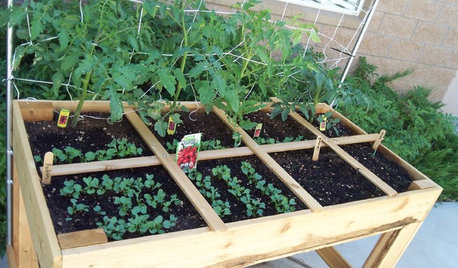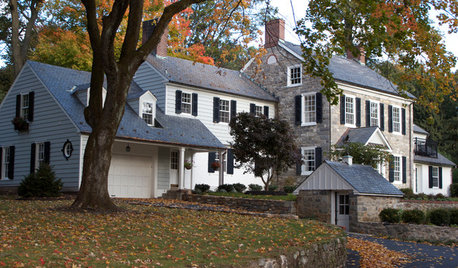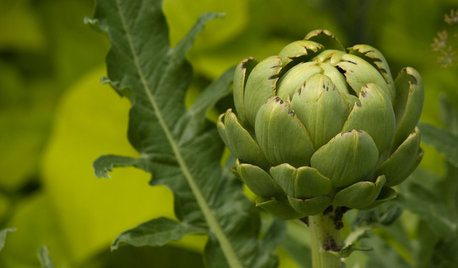What is your fastest time seed to harvest ?
readheads
14 years ago
Related Stories

CONTAINER GARDENS8 Easy Container Plants to Grow From Seed
Get beautiful blooms and herbs in summer by starting these choice garden picks from seed in spring
Full Story
GARDENING AND LANDSCAPINGWorld of Design: 10 Home Gardeners Show Us Their Sweet Summer Harvests
From New York to Tokyo, these gardeners have turned their yards, terraces and rooftops into places of bounty
Full Story
GARDENING GUIDESMaximize Harvests With Square-Foot Gardening
This efficient edible-gardening technique can help people who are short on space
Full Story
WINTER GARDENINGExtend Your Growing Season With a Cold Frame in the Garden
If the sun's shining, it might be time to sow seeds under glass to transplant or harvest
Full Story
GARDENING GUIDES10 Easy Edibles for First-Time Gardeners
Focus on these beginner-friendly vegetables, herbs, beans and salad greens to start a home farm with little fuss
Full Story
EDIBLE GARDENSWhy Grow Quince? For Beauty, Fragrance and Old-Time Flavor
Delightfully perfumed fruit and lovely spring blossoms make this apple and pear cousin worth a spot in the garden
Full Story
FALL GARDENINGWhy Fall Is the Best Time for Planting
Spring is overrated for planting. Starting plants in autumn has advantages for both garden and gardener
Full Story
HOUSEKEEPINGIt’s Time to Clean Your Gutters — Here’s How
Follow these steps to care for your gutters so they can continue to protect your house
Full Story
HOUZZ TVHouzz TV: How to Make and Plant a Veggie Box
See how to start edibles from seed, then transfer the seedlings to a box on stilts to make harvesting more fun
Full Story
GARDENING GUIDESYour Garden Is Stirring — Here’s What to Do in February
February is a good time to start seeds, shape up shrubs and watch for the earliest blooms. Here’s what to do in your part of the U.S. now
Full StoryMore Discussions






duajones
wordwiz
Related Professionals
Belmont Landscape Architects & Landscape Designers · Simi Valley Landscape Architects & Landscape Designers · Eureka Landscape Contractors · Old Saybrook Landscape Contractors · Smyrna Landscape Contractors · Wanaque Landscape Contractors · Baileys Crossroads Landscape Contractors · Cape Girardeau General Contractors · Exeter General Contractors · Greenville General Contractors · Lakewood General Contractors · Framingham Decks, Patios & Outdoor Enclosures · Green Bay Decks, Patios & Outdoor Enclosures · Greendale Decks, Patios & Outdoor Enclosures · St. Louis Decks, Patios & Outdoor Enclosuresvikingkirken
duajones
readheadsOriginal Author
digdirt2
mtbigfish
readheadsOriginal Author
baltais
wordwiz
jrslick (North Central Kansas, Zone 5B)
elskunkito
instar8
anney
duajones
wordwiz
digdirt2
mtbigfish
anthony_toronto
ruet
bigdaddyj
erlyberd
loagiehoagie
earl
mdsimenc
eyesofthewolf
readheadsOriginal Author
eyesofthewolf
Digitalcrypto
edweather USDA 9a, HZ 9, Sunset 28
dirtguy50 SW MO z6a
seysonn
barrie2m_(6a, central PA)
barrie2m_(6a, central PA)
labradors_gw
seysonn
barrie2m_(6a, central PA)
labradors_gw
barrie2m_(6a, central PA)
sheltieche
seysonn
fusion_power